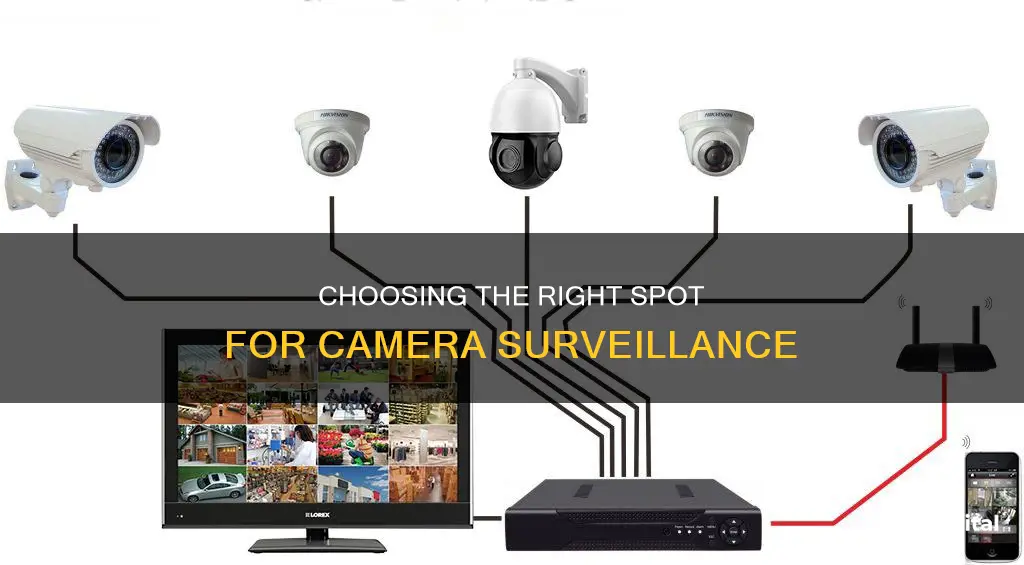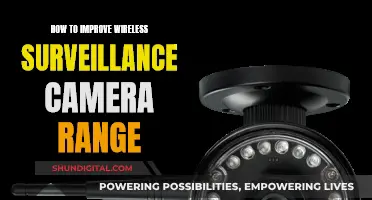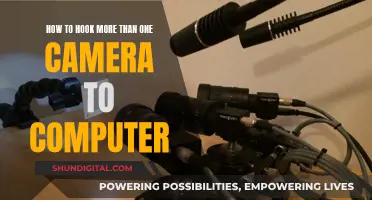
Whether you need to post signs for camera surveillance depends on where you live and the area the cameras will film. In general, you do not need to post a sign to use a video camera in a public area, like in front of your house, or a private area that belongs to you and is not used by the public, like your backyard. However, you may need to be careful if you are thinking of putting surveillance cameras in bathrooms, changing rooms, or anywhere someone has a reasonable expectation of privacy.
While federal law in the US does not regulate surveillance cameras, some states, including New York, California, and Rhode Island, forbid the use of video cameras in areas where individuals have a reasonable expectation of complete privacy. In Delaware and Connecticut, businesses must notify their employees and customers if there are any video cameras on the property that may break any expectations of privacy, such as in a bathroom or changing room.
In Canada, legislation requires organizations conducting video surveillance to post a clear and understandable notice about the use of cameras on their premises.
| Characteristics | Values |
|---|---|
| Surveillance in Public Areas | Generally, no explicit signage is required by law, but it is recommended for deterrence and legal protection. |
| Surveillance in Employee Areas | Notification is legally required in some states, such as Connecticut and Delaware. Even without legal requirements, notification is advised to maintain trust and transparency. |
| Surveillance in Bathrooms and Changing Rooms | Illegal in the US. It risks breaking voyeurism laws and invading personal privacy. |
| Surveillance Signage Placement | Signs should be clear, visible, and placed at entrances and active surveillance areas. |
| Surveillance Signage Appearance | New signs indicate up-to-date security systems. |
What You'll Learn
- Surveillance laws vary by state/country, so check local legislation
- Surveillance in public areas is typically allowed without explicit signage
- Surveillance in employee areas: employees must be notified in some states
- Surveillance in bathrooms/changing rooms is illegal in the US
- Surveillance signs are recommended to deter crime and provide legal protection

Surveillance laws vary by state/country, so check local legislation
Surveillance laws vary significantly by state and country, so it's crucial to familiarize yourself with local legislation before installing security cameras. While federal law in the United States does not regulate surveillance cameras, state laws differ, and it's important to understand the legal boundaries in your specific location.
In general, surveillance in public areas without an expectation of privacy, such as store aisles, restaurants, streets, parks, and public parking lots, is typically permitted without explicit signage. However, it's important to note that some states, including New York and California, prohibit the use of video cameras in areas where individuals have a reasonable expectation of privacy, such as bathrooms, changing rooms, and bedrooms. In these cases, posting a notice to inform the public about the presence of surveillance cameras may be required.
Additionally, audio surveillance is subject to stricter regulations, with some states requiring the consent of all recorded individuals. It is generally recommended to disable audio recording features on security cameras to avoid potential legal issues.
Outside of the United States, surveillance laws also vary widely. For example, China has been criticized for its extensive government surveillance and failure to protect citizens' privacy. On the other hand, countries like Norway, South Africa, Switzerland, Argentina, and Canada have been ranked higher in terms of privacy protections and adherence to international standards.
To ensure compliance with the law and respect for individuals' privacy, it is essential to consult the specific regulations in your state or country before installing and operating security cameras.
The Evolution of Disposable Cameras: Still Relevant Today?
You may want to see also

Surveillance in public areas is typically allowed without explicit signage
While signage may not be legally required in these public areas, it is often recommended for deterrence and legal protection. Clear and visible signs placed at entrances and active surveillance areas can enhance the security measures by making people aware that they are being monitored. This can also provide additional legal safeguards in case of any disputes or issues arising from the surveillance.
It is worth noting that there are certain places where the use of surveillance cameras is prohibited or restricted due to privacy concerns. For example, in the US, it is generally illegal for employers to install security cameras in bathrooms, changing rooms, and other personal areas where individuals have a reasonable expectation of privacy. Similar restrictions may apply in other countries as well, so it is crucial to be aware of the specific laws and regulations in your region.
Additionally, some states in the US have specific laws governing the use of security cameras. For instance, in New York and California, the use of video cameras is prohibited in areas where individuals have a reasonable expectation of privacy, such as bathrooms and changing rooms. In these cases, a notice must be posted to inform the public about the presence of surveillance cameras.
In summary, while surveillance in public areas without explicit signage is typically allowed, it is important to be mindful of the legal obligations and privacy expectations that may vary across different locations. Consulting with security experts and legal professionals can help ensure compliance with the relevant laws and regulations.
Travel Tips: Wrapping Camera Batteries for Safe Journeys
You may want to see also

Surveillance in employee areas: employees must be notified in some states
Surveillance in employee areas is a tricky subject and businesses must be aware of their legal obligations. While federal legislation does not require businesses to disclose the use of surveillance cameras, certain states have their own laws. For example, in Connecticut, employers must notify their staff about the use of monitoring software and specify the types or methods of monitoring in advance and in writing. Similarly, in New York, private employers must provide advance written notice of the types of electronic monitoring that will occur.
In general, it is recommended that businesses notify their employees about the use of surveillance cameras. This helps to maintain trust and transparency, as well as a positive work environment. It is also a good idea to put up clear and visible signage at entrances and active surveillance areas, indicating up-to-date security systems. This enhances the deterrence effect of the cameras and provides extra legal safeguards for monitoring.
It is important to note that there are places where surveillance cameras should not be installed, such as bathrooms, changing rooms, and other areas where people may undress. In some states, if cameras are installed in these areas, a notice must be posted to inform the public.
Unlocking Cyberpunk's Camera Mode: A Step-by-Step Guide
You may want to see also

Surveillance in bathrooms/changing rooms is illegal in the US
Surveillance in bathrooms and changing rooms is illegal in the US. These areas are considered private spaces where individuals have a reasonable expectation of privacy.
According to laws in several US states, including Alabama, California, and Massachusetts, it is unlawful to install video cameras in bathrooms, changing rooms, and other private places where people typically undress. This is because individuals have a reasonable expectation of privacy in these spaces.
In the US, employers must never install security cameras in bathrooms, changing rooms, or similar areas. Doing so risks breaking voyeurism laws and invading personal privacy.
However, there are some exceptions. For instance, security cameras in bathrooms are sometimes permitted in schools to ensure student safety and reduce smoking and violence. These cameras are typically stationary and cannot be moved, zoomed in on, or angled to invade privacy.
Additionally, individuals can install security cameras in their own bathrooms, but they must inform visitors about the cameras and disable them when guests are present.
While federal law does not regulate surveillance cameras, it is important to note that the Fourth Amendment to the US Constitution provides protection to individuals against unreasonable or unwarranted searches and seizures. This amendment comes closest to addressing a federal stance on surveillance.
Charging Camera Batteries: International Travel Guide
You may want to see also

Surveillance signs are recommended to deter crime and provide legal protection
Surveillance signs are an effective way to deter crime and provide legal protection for your property. While not always legally required, they are recommended to enhance the deterrence effect of security cameras and provide extra legal safeguards for monitoring.
The presence of security cameras alone can deter criminal activity, but adding surveillance signs increases the perceived risk of being caught by indicating that your site is under active surveillance. This is especially true when signs are combined with visible security infrastructure such as cameras, lights, and alarm systems.
When placing surveillance signs, it is important to ensure they are clear and visible, and placed at entrances and active surveillance areas. New signs that look fresh and modern can indicate up-to-date security systems. Old, weathered signs, on the other hand, may suggest that your security system is outdated and less effective.
It is also crucial to be aware of the legal requirements and restrictions regarding surveillance in your area. While the federal government does not regulate surveillance cameras, state laws differ. In general, you are not required to post a sign for surveillance in public areas or on private property that is not accessible to the public. However, some states, such as New York and California, prohibit the use of video cameras in areas where individuals have a reasonable expectation of privacy, such as bathrooms and changing rooms, and require a notice to be posted to inform the public.
In addition to deterring crime, surveillance signs can also provide legal protection. By posting signs, you are clearly notifying individuals that they are being monitored, which can help protect you from potential privacy or trespassing lawsuits.
In summary, surveillance signs are a recommended addition to your security system as they increase the deterrence effect of cameras, provide legal safeguards, and clearly notify individuals of ongoing surveillance, thereby reducing the risk of privacy violations.
Finding Adobe Camera Raw Files: Location and Access
You may want to see also
Frequently asked questions
No, you are not legally required to post signs for camera surveillance in public areas or private areas that are not used by the public. However, it is recommended to post signs to deter potential criminals and provide legal protection.
It is recommended to place the signs at entrances and in areas where surveillance is active. This helps to reinforce the message that your premises are well-protected.
The signs should be clear and visible, indicating that the property is under surveillance. You can also include additional information such as the hours of surveillance (e.g., "24-hour surveillance") or a friendly message like "Smile! You're on camera".
Yes, it is important to be aware of the laws and regulations in your specific state or country. In some states, such as New York and California, video cameras are prohibited in areas where individuals have a reasonable expectation of privacy, such as bathrooms and changing rooms. It is also important to respect individuals' privacy and not invade personal spaces.







